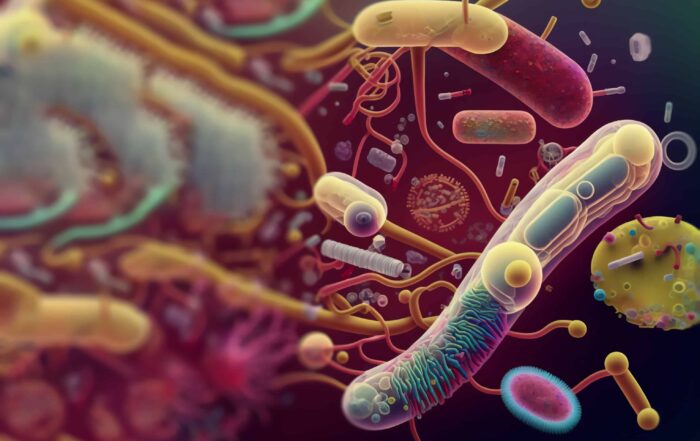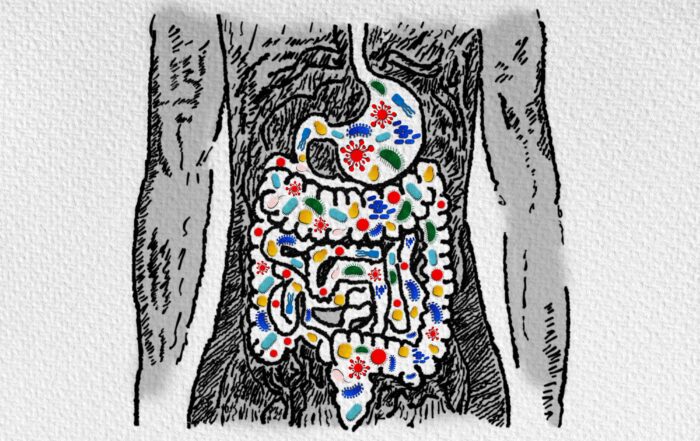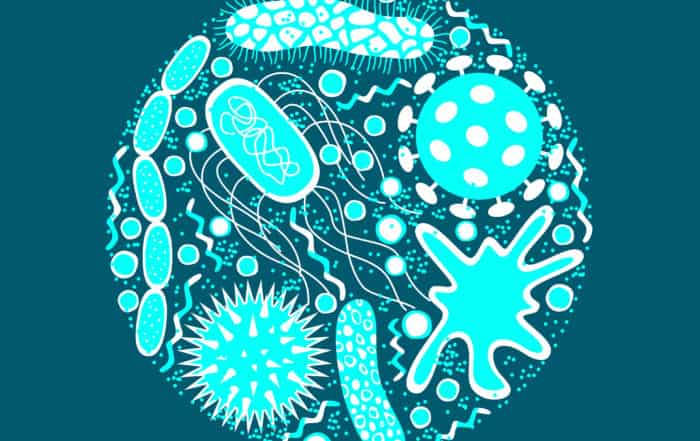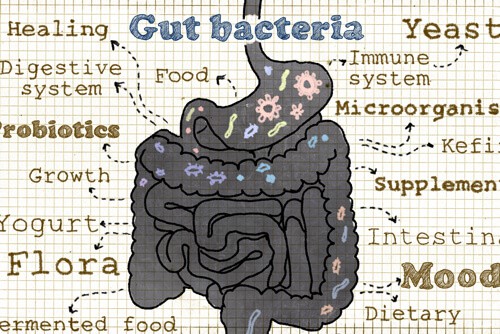
During the course of our study of helminths and disease in Western society, we have recently encountered the view that some children with autism are infected with a large number of intestinal worms, called helminths.
Parents observe that removal of some of the apparent helminths can alleviate some of the symptoms of autism in some cases, at least temporarily. This has led some parents to conclude that helminths are a causative agent in the pathogenesis of autism, and that extreme measures should be taken to remove them. In support of this view, uncontrolled exposure to helminths in developing countries, often accompanied by malnutrition and dehydration, is associated with developmental delays. On the other hand, several scientists have predicted that controlled exposure to certain helminths in Western society might actually prevent or treat neuropsychiatric disorders, potentially including autism [2-5]. Thus, it is predicted that exposure to helminths in Western society will have a much different effect than uncontrolled exposure to helminths accompanied by malnutrition and dehydration in developing countries. A substantial body of scientific evidence supports those predictions [2, 6, 7].
The idea might be put forth that both good helminths and bad helminths exist, the good ones helping to treat autism and the bad ones making it worse. Although this idea would explain the conundrum, there exists another explanation which is much more consistent with the known facts.
The apparent helminths seen in autistic children are often observed following exposure to chlorine dioxide, a powerful oxidant. Use of broad spectrum toxins such as this will result in destruction of the lining of the gut and can result in an actual shedding of the gut lining. Very close examination of this shed material reveals a stringy, somewhat cloudy, mucus-like substance. We can be very confident that this material is not a helminth. It’s not even related to a helminth. However, just as a decaying leaf can be mistaken for a leech by a person who has never closely examined a leech, so might people who have never examined helminths be tricked by shed mucosal lining. When a sample is sent to a lab, laboratory personnel look for helminth eggs and often for any other physical signs that might indicate the presence of a helminth. My laboratory has frequently examined feces over the past 20 years, and any technician after only cursory training with a microscope can easily distinguish between the various components we find: bacteria; fiber particles from food; mucus; cells shed from the host; helminth eggs. Here is how we know that the material expelled following treatment with chlorine dioxide is NOT a helminth:
- The material shed from these children doesn’t look anything like a helminth to people who are accustomed to looking at helminths. Mother Nature has produced a vast array of helminths as well as other worms, such as liver flukes, that can colonize mammals. After years of examining the biome in wild animals, my lab has seen numerous sorts of flatworms and roundworms, and hundreds of examples. We have seen roundworms (nematodes) as small as 3/16 of an inch and flatworms (cestodes in particular) three feet long. Looking at a worm to an experienced biologist is much like looking at a car to the average Westerner. There may be hundreds of different shapes and sizes, but once we know what we are looking for, they are all very, very easy to spot. The material shed from these children lacks the fine structure and the detailed morphology that is easily recognized as a worm by experienced biologists.
- Severe diarrheal illnesses that have a known microbial cause can result in the shedding and excretion of wispy, stringy material. Since the cause can be firmly established as a bacterium, not a helminth, and since we can see under the microscope that the wispy, stringy material is not bacterial, we can be certain that the wispy, stringy material is of human origin. (Laboratory tests confirm this deduction.)
- Helminths make eggs. LOTS of eggs. That is what they do for a living. Each helminth currently in my laboratory makes almost 1500 eggs a day, which beats even the best chicken by a wide margin. The eggs of each helminth are fairly distinctive, just as a chicken egg is different from a blue jay egg. Nevertheless, all helminth eggs are easy to identify in the stool, just as bird eggs lying around in a chicken coop are easily recognizable. If there are no eggs, then there are no worms. It is true that many helminths (e.g., Hymenolepis nana and Taenia solium) can “hide” in the host without producing eggs, but when they are hiding, they are not in their adult (worm) form and they do not generally live in the lumen of the gut (with the food being digested) during that time.
- The material shed from children treated with chlorine dioxide looks like the gut lining under a microscope. The appearance of a gut lining is very distinctive under the microscope, as can be seen in our published work [8].
- We know that controlled exposure to helminths generally protects humans from inflammation and can be used to treat chronic inflammatory disease [2, 6, 7]. We also know that a very wide range of helminths seem to work [9]. Helminths have certain properties that allow them to live in the host, and those same properties help the host regulate its immune response; helminths and immune regulation go hand-in-hand [10]. Thus, we don’t expect to see good and bad helminths, some alleviating autism while others make it worse. In addition, our recently published survey of individuals self-treating with helminths can be considered. Some of the individuals we evaluated in that study have autism, and the available responses/reports indicate that helminth-mediated decreases in inflammation are helpful, not harmful to many individuals with autism [1]. Since that original paper was published, we have found additional information in the public domain, corroborated by interview with a physician, that helminths do indeed show a beneficial effect in patients with autism, particularly those with ongoing inflammatory issues. Specifically, the “average” response to the porcine whipworm (TSO), as described by the physician, of about 70 individuals with inflammation-associated autism (autism with gastrointestinal or allergic/autoimmune issues) was as follows:
- Improvement of gastrointestinal issues, including diarrhea, abdominal bloating, abdominal pain, appetite, yeast, and dysbacteriosis.
- Improvement in behavior linked to gut inflammation, including sleeping disturbances, grinding, self-injurious behaviors, aggressiveness, stereotypy, and hyperactivity.
- Improvement of allergic symptoms, specifically asthma, rhinitis, and conjunctivitis.
- Improvement of neuropsychiatric issues, including attention, focus, stable mood, OCD behaviors, receptive language, and learning.
A number of factors, including potential side effects, can be evaluated when considering the use of helminths [1]. For example, the preparation of TSO used by those approximately 70 individuals with autism had a very low pH (2.7), a factor that is potentially important for the effectiveness of that organism [1]. As another example, two out of the approximately 70 individuals discontinued use of TSO due to “significant hyperactivity.” However, clearly, as described by the physician, the typical effect of helminths on patients with inflammation-associated autism was very positive.
In addition, ongoing experimental work in my laboratory in collaboration with Professor Staci Bilbo has uncovered some of the underlying mechanisms of helminth-mediated protection of the brain from inflammation in laboratory animals (data not yet published). Although modern medical science cannot currently recommend helminths for the treatment of any disease, the emerging data are promising, and studies are underway which should eventually help us make recommendations.
- The argument can be made: “If I get these things out of my child, and my child is better, then these things must be bad. They must be something foreign, not my child’s own intestinal lining.” Although this argument makes sense on the surface, it has a fatal flaw. Because of the well-established gut-brain connection, and because of problems many children with autism have with their gut, it is entirely plausible that removing the gut epithelium might temporarily relieve some symptoms of autism in some cases. Indeed, the use of antibiotics which kill beneficial bacteria can temporarily relieve some neuropsychological symptoms in some children with autism [11], providing support for this view. Thus, a perfectly logical and reasonable explanation exists which encompasses all of the observations made by parents following use of chlorine dioxide, and it does not involve helminths. In contrast, as noted in the first five points above, any explanation involving helminths is contradicted by well-known information about the basic biology of helminths as well as other observations.
It is important for parents to know that treatment of their children with strong oxidants could damage their child’s gut lining. The view that they are simply hurting invasive and damaging worms is clearly not correct. As clinicians have pointed out see: Warning Against Chlorine Dioxide Use, this sort of destruction of the natural gut ecosystem is probably not a good long-term solution for treatment of disease, and it may have undesirable long-term consequences, making a bad situation worse.
By William Parker, Ph.D.
Duke University Medical Center, Durham, NC
References
- Cheng, A.M., et al., Overcoming evolutionary mismatch by self-treatment with helminths: current practices and experience. Journal of Evolutionary Medicine, 2015. 3: p. Article ID 235910.
- Parker, W. and J. Ollerton, Evolutionary biology and anthropology suggest biome reconstitution as a necessary approach toward dealing with immune disorders. Evolution, Medicine, and Public Health, 2013. 2013: p. 89–103.
- Rook, G.A.W. and C.A. Lowry, The hygiene hypothesis and affective and anxiety disorders, in Hygiene Hypothesis and Darwinian Medicine. 2009, Birkhauser Verlag Ag: Viadukstrasse 40-44, Po Box 133, Ch-4010 Basel, Switzerland. p. 189-220.
- Becker, K.G., Autism, asthma, inflammation, and the hygiene hypothesis. Medical Hypotheses, 2007. 69(4): p. 731-740.
- Raison, C.L., C.A. Lowry, and G.W. Rook, Inflammation, sanitation, and consternation: Loss of contact with coevolved, tolerogenic microorganisms and the pathophysiology and treatment of major depression. Archives of General Psychiatry, 2010. 67(12): p. 1211-1224.
- Bilbo, S.D., et al., Reconstitution of the human biome as the most reasonable solution for epidemics of allergic and autoimmune diseases. Medical Hypotheses, 2011. 77(4): p. 494-504.
- Parker, W., et al., A prescription for clinical immunology: the pills are available and ready for testing. Current Medical Research and Opinion, 2012. 28: p. 1193-1202.
- Kotze, S.H., et al., Spontaneous bacterial cell lysis and biofilm formation in the colon of the Cape Dune mole-rat and the laboratory rabbit. Appl Microbiol Biotechnol, 2011. 90(5): p. 1773-83.
- Correale, J. and M. Farez, Association between parasite infection and immune responses in multiple sclerosis. Annals of Neurology, 2007. 61(2): p. 97-108.
- Hewitson, J.P., J.R. Grainger, and R.M. Maizels, Helminth immunoregulation: the role of parasite secreted proteins in modulating host immunity. Molecular & Biochemical Parasitology, 2009. 167(1): p. 1-11.
- Sandler, R.H., et al., Short-term benefit from oral vancomycin treatment of regressive-onset autism. J Child Neurol, 2000. 15(7): p. 429-35.
Editorial – Fecal Microbiota Transplantation and Autism
Over the past several years, Fecal Microbiota Transplantation (FMT) has become the subject of growing interest in the autism community due, at least in part, to the increased awareness of the gut-brain
New multi-national study adds to evidence linking alterations of the gut microbiome to autism
Strong new evidence linking alterations of the gut microbiome to autism spectrum disorders (ASD) comes from a new multi-national study by James Morton and colleagues. In the study, researchers in North America,
Constipation in infancy associated with higher likelihood of autism diagnosis
More evidence linking autism spectrum disorders (ASD) to gastrointestinal problems comes from a study by researchers in Taiwan and the United States, who report that ASD occurs at an elevated rate in
Microbiota therapy may lead to lasting beneficial changes in the gut health of children with autism
Microbiota transfer therapy (MTT) may lead to long-term improvements in the gut health of children with autism spectrum disorders (ASD), according to a recent study by Khemlal Nirmalkar and colleagues at Arizona
Researchers find clues to inconsistent microbiome findings in ASD, see longitudinal effects
A new study suggests that changes occurring over time in the behavior of individuals with autism spectrum disorders (ASD) may be related to their gut microbiomes. In addition, it offers insights into
New animal research offers insights into the effects of the microbiome on social deficits in ASD
A new study provides additional clues about the role the gut microbiome may play in autism spectrum disorders (ASD). In earlier research (see ARRI 2019, Volume 1), Mauro Costa-Mattioli and colleagues found






